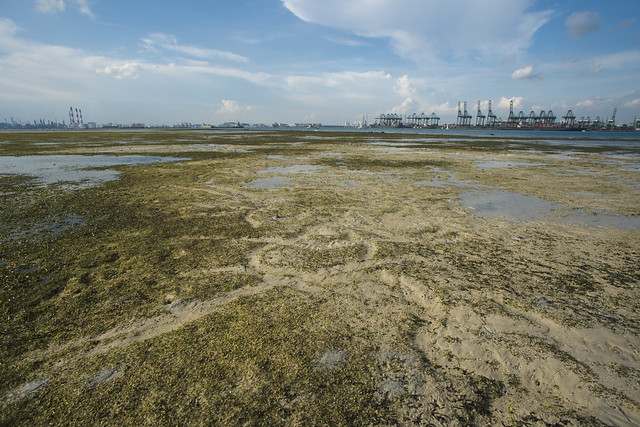 |
| Dugong feeding trails on Cyrene Reef next to Pasir Panjang Container Terminals, on 3 Dec 2017. |
Dugongs used to be common in the Johor Straits but were considered locally extinct by the 1980's. While in the late 1990's, there were increased encounters with dugongs in the Johor Straits, there were fewer sightings in the 2000's.
Recent sightings
A living dugong was spotted during a Naked Hermit Crab walk at high tide from the Chek Jawa Boardwalk on 6 Oct 2013!
Sadly, a dead dugong washed up on Pulau Tekong in Jun 2006. Scientists who were at the stranding shared: "Though slightly bloated from gases, the dugong carcass was in surprisingly reasonable condition and was thus further dissected. There were no extraordinary signs of physical impact and she had a stomach full of sea grass. Cause of death is unknown."
Dugong feeding trails are formed when dugongs chomp up seagrasses including their roots, leaving a shallow meandering furrow of about equal width and depth. To eat seagrasses, the dugong pulls out a mouthful of seagrasses with its thick lips, shakes it to get rid of the sand and then swallows.
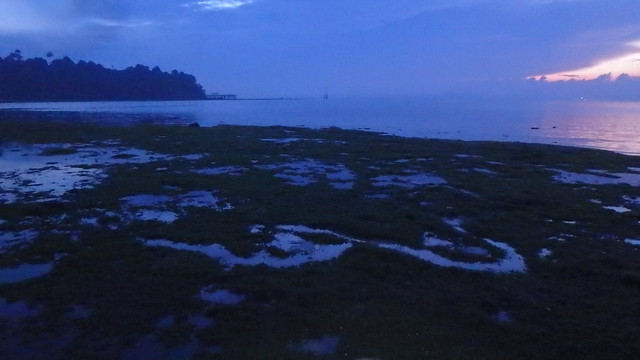 |
| Dugong feeding trails on Pulau Sekudu on 17 May 2018 |
Seagrass is the dugong's main food. So not surprisingly, it is also sometimes called the Sea Cow!
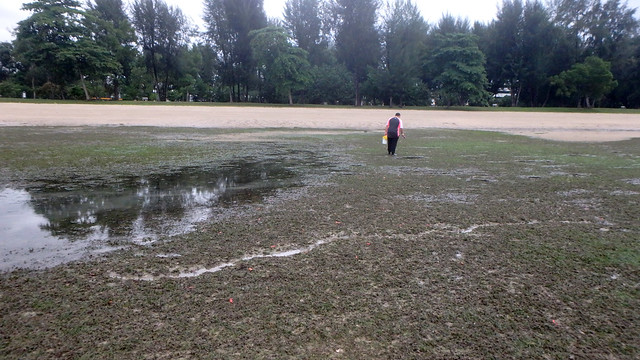 |
| Dugong feeding trails on Changi on 30 May 2017 |
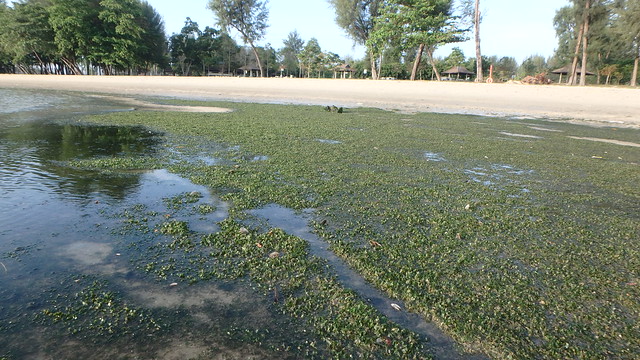 |
| Dugong feeding trails on Changi on 20 Apr 2018 |
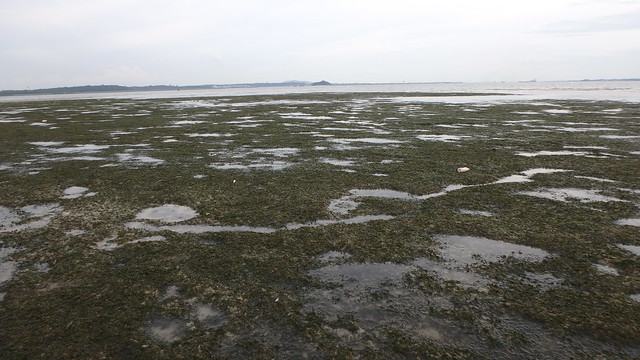 |
| Dugong feeding trail on Chek Jawa on 5 Nov 2017. |
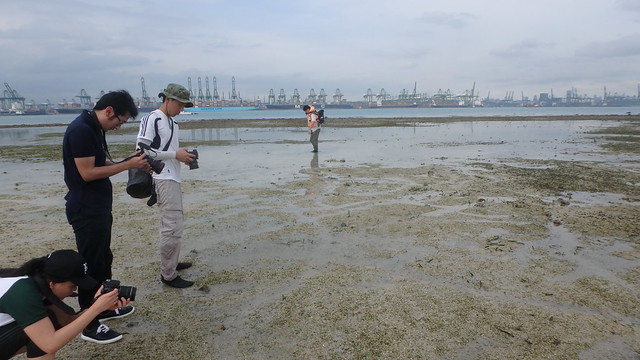 |
| Dugong feeding trails on Cyrene Reef on 1 Mar 2018. |
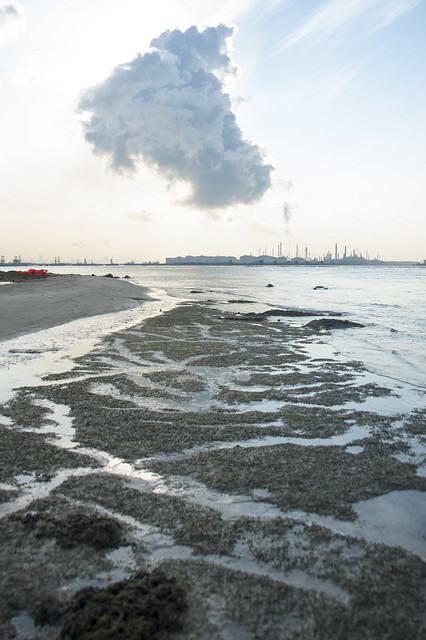 |
| Dugong feeding trails on Terumbu Pempang Laut near petrochemical plants on Pulau Bukom seen on 11 May 2012. |
Dugongs are NOT the same as manatees
While the manatee has a circular tail fluke, dugongs have a forked tail fluke.
 |
| Dugong (left) versus Manatee (right) click on image for larger view |
While the dugong's natural range is from Eastern Africa, the Red Sea, through India and Southeast Asia to Australia.
The Dugong is listed as 'Critically Endangered' in the Red List of threatened animals of Singapore. The dugong's natural predators are sharks, killer whales and crocodiles. But man is the main threat. Dugongs drown when trapped in fishing nets and are injured by boat propellers. Mostly, they are threatened by the loss of seagrass habitats. Dugongs used to form herds of hundreds, now groups of six are the average.
Where can I see dugongs in Singapore?
10 Jun (Sun): Chek Jawa Open House
FREE, no registration required, just come to Chek Jawa!
Volunteer guides will be stationed all over the boardwalk to share about Chek Jawa's amazing wildlife. Plus kids activities with prizes! More details.
13 June (Wed): FREE Public Talks on Seagrass!
Learn more about seagrasses from the team at the 13th International Seagrass Biology Workshop for this special series of public talks titled "Translating Seagrass Science Into Action".
13 June (Wed): FREE Public Talks on Seagrass!
Learn more about seagrasses from the team at the 13th International Seagrass Biology Workshop for this special series of public talks titled "Translating Seagrass Science Into Action".
MORE ways ...
- Join intertidal walks by NParks at Chek Jawa, Pulau Ubin.
- Check out these opportunities to explore our shores through walks, or during volunteer work for our shores.
Learn more about Singapore's dugongs on the wild fact sheets on wildsingapore.



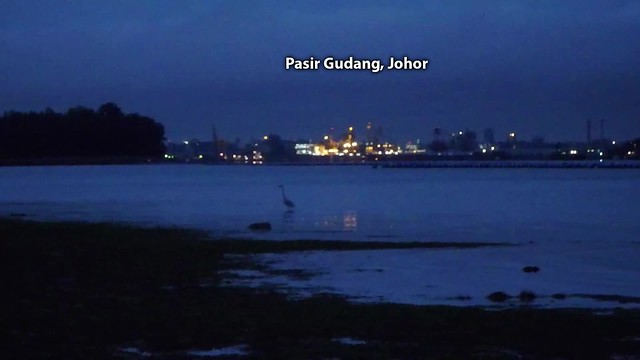
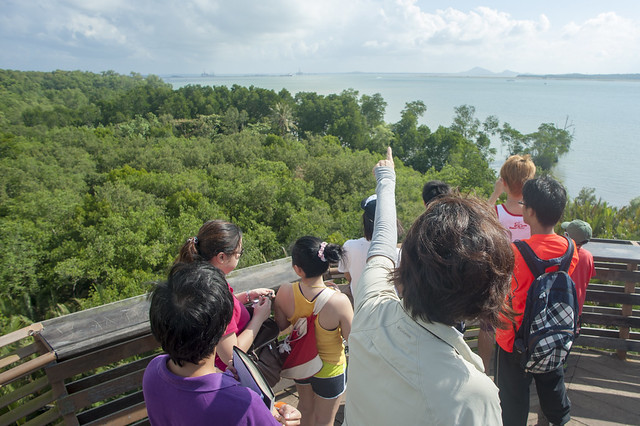
No comments:
Post a Comment